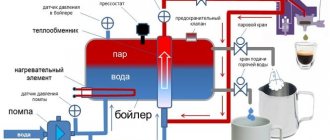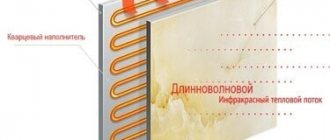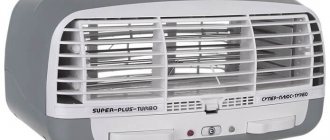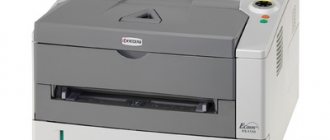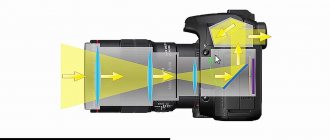Basic concept and features of what drip defrosting is
The system facilitates defrosting automatically using the evaporator on the rear panel, so there is no need for manual cleaning. This, in turn, cools the air flow. The temperature inside always remains positive. This approach promotes the formation of condensation on the surface.
Defrosting controls the presence of ice that accumulates in certain areas of the refrigerator. When its layer becomes as large as possible, the system automatically turns off the compressor.
What is drip technology?
Refrigerators equipped with such a system have a special recess on the back wall for moisture drainage. First, maximum cooling of the internal space occurs, and then the compressor turns off and the frozen condensate thaws. To ensure that frost accumulates only on the rear wall, there is a special evaporation element behind it.
Thus, the operation of a refrigerator with a drip defrosting system is based on the “freezing-thawing” principle. The compressor periodically turns off, and at this time the frozen condensate becomes liquid again and flows into a special recess. Then it goes into a container that can be reached from the back of the refrigerator.
What is a refrigerator defrosting drip system?
Products with drip technology are trouble-free to use, and their cost is in the middle range. The principle of drip defrosting of the refrigeration chamber is based on the following aspects:
- The equipment is equipped with a panel in which moisture accumulates and is discharged into specially installed tanks.
- The defrosting process is carried out silently for residents thanks to the built-in mode, which optimally determines the time of freezing and thawing.
- Refrigerators operating using this method are equipped with an alarm that is triggered during periods of elevated internal temperature. In this case, users are immediately notified that the refrigerator needs to be defrosted.
The drip defrosting function is well thought out. The only thing is that sometimes it is necessary to clean the containers that collect water so that they do not become clogged.
Caring for a refrigerator with a drip system
Some users are confused by the appearance of the back wall of the refrigerator, along which water flows from time to time. They try to wipe up the water or urgently dial the customer service number. In fact, this is a planned, carefully calculated process, and nothing needs to be done about it.
You don’t have to worry about the fact that such a device requires manual defrosting, since the drip system is quite well designed. The only thing that needs to be remembered periodically is cleaning the containers that accumulate water, as sometimes they tend to get clogged.
To carry out this procedure, you can read the instructions in more detail, which describe methods for cleaning containers. Typically, a syringe or thin wire is used for cleaning. These auxiliary tools will help remove stuck dirt particles from the holes.
Advantages and disadvantages of drip defrosting
The drip defrosting technique has a simple design; its operating principle is based on the simplest physical phenomenon - condensation.
System advantages:
- comfortable operation;
- affordable price;
- high quality;
- quiet operation of the equipment;
- minimal power consumption.
Disadvantages of the system:
- The freezer needs to be defrosted independently;
- The drain hole and drain hose may become clogged.
Caring for your drip refrigerator
For a refrigerator with a drip defrosting system, the same care rules apply as for any other unit:
- Regular defrosting. It is worth remembering that, despite the “independence” of the unit, ice continues to accumulate in the same volume in the refrigerator compartment and freezer. You can defrost only the freezer compartment, but periodically it is recommended to maintain the entire refrigerator as a whole.
- Refrigerator surfaces should only be washed with products that do not contain abrasive elements.
Among the features and differences of care, the following points can be noted:
- It is necessary to regularly check the patency of the outlet tube in the rear wall of the refrigerator. If it becomes clogged, melt water can flood the chamber inside and even get into the internal device.
- Despite the fact that the system assumes the evaporation of water from the tank, it is worth regularly checking its filling yourself.
The most popular defrosting systems
Modern technologies are perfect for defrosting. They ensure constant air circulation inside. An evaporator is provided between the freezer and main chamber. We figured out what drip defrosting of a refrigerator is, let’s look at popular systems.
The air flow is supplied from one side and exits from the opposite. If the compressor turns off, the water flows into the tank and then evaporates. There are several types of defrosting. Let's look at the most popular of them.
Refrigerators are equipped with separate chambers for storing vegetables.
No Frost defrosting system
No Frost technology means “no frost”. During operation, a snow cap will not accumulate on the inner walls of the refrigerator, which should be removed independently.
The main difference between this system is the absence of an evaporator or air cooler, which is present in standard refrigerators. The evaporator is provided in a recess or on the back wall of the equipment and has the shape of a coil with fins.
The advantages of the No Frost option are as follows:
- minimal effort required for operation;
- uniform temperature throughout the entire volume;
- easy and simple use of technology;
- Condensation does not collect on the back wall;
- Built-in quick freezing function.
Disadvantages of the No Frost option:
- high price;
- such products do not differ in capacity;
- there is a high risk of breakdown due to the presence of many parts;
- consume relatively more energy;
- Quite noisy when working.
However, this defrosting system has more advantages, which is why it is popular among buyers.
Literally, the term “No Frost” is translated from English as “without frost”
Naturecool defrosting system
The Naturecool defrosting system is an innovative, modern development. It does not use forced air circulation. The cold enters the chamber directly from the evaporator, which is located inside the walls. Thanks to this, ice does not form in the chambers.
Refrigerators with this defrosting system have the following advantages:
- high capacity;
- there are additional compartments for storing food;
- quiet work.
Since this defrosting technology is new and is used mainly in Bosch refrigerators, users have not yet discovered any disadvantages.
Cooling in NatureCool refrigerators is carried out without forced air circulation
Direct Cool (drip defrost)
The Direct Cool refrigerator drip defrosting system (which means “directional cooling”) is the simplest, most affordable and reliable. While the compressor is operating, the temperature in the refrigerator gradually decreases due to heat intake from the evaporator. Moisture begins to accumulate and freeze on the back wall. If the temperature becomes as low as possible, the compressor turns off and the air temperature begins to rise.
The Direct Cool drip defrosting system has numerous advantages:
- affordable cost of equipment and maintenance;
- almost silent operation;
- the likelihood of parts failure is reduced;
- widest selection of models;
- low power consumption.
Minor cons:
- not in freezers;
- the back wall is always covered with ice;
- Frequent defrosting is required;
- The walls of the refrigerator compartment can be of different temperatures.
Some users note that water may leak during operation if the drain is clogged. Through it, condensate is removed from the refrigeration chamber. Therefore, manufacturers do not recommend placing equipment on carpet, laminate or parquet.
Low Frost
The Low Frost option is based on an evaporator, which is located across the entire surface of the freezer. This approach makes it possible to maintain temperature and humidity at the same level.
Ice formation is quite slow, and it appears in a thin layer. This makes defrosting much easier. The advantages of the system are as follows:
- there is no strong condensation, which contributes to the appearance of ice;
- the difference between the temperatures of the walls and the air in the chamber is small;
- the entire volume of air in the freezer is cooled;
- Maintenance is quick and easy.
The undeniable advantage of Low Frost defrosting technology is its low cost, simplicity of design and attractive price for consumables. Household refrigerators with such a system are very popular in the market.
LowFrost is a design of an evaporator circuit placed around the perimeter of the freezer behind its inner walls.
Refrigerator defrosting systems
The technology is not intended for compartments with temperatures below 0°C
To remove ice in domestic refrigeration units, 2 types of systems are used:
- Drip (or Nature Cool or Natur Cool), characterized by its simplicity of design. Since during operation of the system there is the formation of condensation flowing down the back wall, refrigerators are called “crying”. Condensation flows only along the rear surface of the refrigerator compartment, the side walls and door trim remain dry. The technology is not intended for compartments with temperatures below 0°C, so drip-type refrigerators require periodic defrosting.
- In 1973, the West German company Bosch introduced equipment equipped with the No Frost system. An electric heater is used to remove frost from the surface of the heat exchanger. The system includes a fan unit that evenly distributes the flow of cold air. The advantage of the technology is the ability to work at temperatures below 0°C (for example, in the freezer compartment). Due to automatic ice removal, periodic manual defrosting of the chambers is not required.
Rating of the best models of refrigerators with a drip defrosting system
Here is a rating of the best models of refrigerators with a drip defrosting system according to users’ opinions and sales volumes.
Refrigerator Shivaki SHRF-90DP
An inexpensive and spacious refrigerator from the manufacturer Shivaki is an affordable budget option, its average cost is 12 thousand rubles. The equipment weighs only 26 kg. Perfect for a rented or small apartment.
The original design allows the refrigerator to be used in conjunction with a bread maker, dishwasher and other appliances. There are two doors that open separately. The kit comes with various useful accessories.
Important Features:
- class A energy consumption savings;
- silent operation;
- The drip system is only in the main chamber.
Among users, this refrigerator received 4 points out of 5.
Price: ₽ 12,000
Refrigerator Indesit SB 185
A powerful, large and capacious device with a drip defrosting system. The total volume of the chambers is 339 liters. The quality of defrosting is at the highest level; even after a power outage, the cold will remain in the chambers for up to 15 hours.
It operates almost silently, but has class B energy consumption. The average cost varies from 18 thousand rubles. The technique has received a large number of positive reviews.
Price: ₽ 18,000
Refrigerator Pozis RK 139
A beautiful and stylish refrigerator from a Russian manufacturer with a bottom-mounted freezer. The model has a strict design and is made in white. It is distinguished by its height, capacity (285 liters) and economical energy consumption.
The original design has the ability to overweight the doors in order to open them comfortably. The average cost is 19 thousand rubles.
Price: RUB 19,572
Advantages and disadvantages
The advantages of the drip defrosting system include:
- increasing the volume of chambers due to the absence of additional blocks;
- the drip refrigerator has reduced energy consumption;
- by simplifying the design, it is possible to reduce the cost of equipment;
- drip-type products have a wide range;
- There is no extraneous noise from the fans when the unit is operating.
Draining condensate causes corrosion of steel elements
Disadvantages of technology:
- the drip system cannot be used in freezers designed to cool food to a temperature of -18°C;
- dependence of the temperature in the refrigeration section on the degree of cooling of the freezer (applies to equipment with 1 compressor);
- draining condensate enters the internal cavities, causing corrosion of steel structural elements;
- the condensation formed on the back wall of the refrigerator freezes;
- it takes several hours to reach operating temperature;
- the equipment requires periodic defrosting to remove a layer of ice from the freezer;
- the occurrence of an unpleasant odor due to water entering the insulator layer (located between the steel outer shell and the internal plastic linings)
- There is an uneven temperature inside the refrigerator compartment (the difference is up to 8°C).
Comparison table of the best drip defrosting systems for refrigerators
| Name | Main characteristics | Price |
| Shivaki | Weight 26 kg, comes with various useful accessories, class A energy consumption saving. | ₽ 12 000 |
| Indesit | With a drip defrosting system, the total volume of the chambers is 339 liters, it operates almost silently, but has class B energy consumption. | ₽ 18 000 |
| Pozis | With a bottom-mounted freezer, it has a simple design and is finished in white. | ₽ 19 572 |
Which defrosting system is better?
Any automatic defrosting system is better than a DIY option. The user does not have to monitor the situation with accumulated ice or remove it. It is clear that the more expensive the refrigerator model, the more advanced its defrosting system and other elements of user comfort.
At the moment, practically no refrigerators are produced that require manual defrosting. But if you look at this issue from the point of view of payback, manual defrosting turns out to be not so bad. This procedure should be performed only 1-2 times a year. And the difference in price is not in favor of the automation: it is such that it will not “return” over the entire service life of the refrigerator.
If you make a choice between the drip system and “No Frost”, you need to understand that the first is more reliable, but requires more frequent defrosting. The second one is more comfortable, but in terms of reliability it has proven itself to be weaker.
